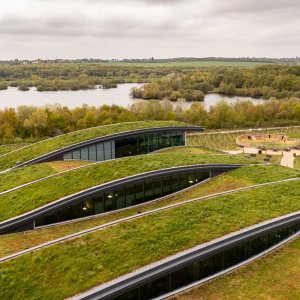Mexico Continues its Drive as NA Manufacturing Hub

STORY INLINE POST
During 1Q22, all major regions in Mexico benefited from the global trend to re-shore into the country. New industrial investments were completed by global operations across the board — in nearly every market. Through NAI Mexico’s Business Intelligence Unit and our 15 offices in Mexico, we can share a unique perspective regarding activity in every market, reported here with Mexico Business.
Macro Real Estate Trends for Q1 include:
- Distribution: Distribution and fulfillment operations continue expanding in both border markets and interior locations.
- Pacific Rim Migration: While the Bajio region sees consistent migration, the border markets of Tijuana and Juarez are also experiencing Pacific rim investments in electronics sectors. Monterrey is experiencing the same.
- Eastern Europe Migration: Even though the war in Ukraine technically commenced in March, global firms with a presence in Eastern Europe are already contacting our teams regarding new expansions and some relocations into Mexico.
- Activity Levels: Activity levels remain high, with most markets experiencing strong rental volume, along with rental rate increases during Q1 and year over year. New industrial construction continues but markets are benefiting for the first year ever from significant levels of pre-leasing in major destinations.
For detailed information for specific cities/markets please check www.naimexico.com
National Industrial Real Estate Data – Mexico 1Q22
Availability: Nationwide, vacancy rates have continuously dropped since the first quarter of 2021, when 45.8 million square feet were available. Currently, there are 32.4 million square feet available, with an average vacancy rate of 3.34 percent, a decrease of 29.3 percent within the last year.
Lease Rates: Consequently, average asking lease rates across Mexico have risen. In 1Q21, they averaged US$0.42 per square foot monthly, and now stand at US$0.46 per square foot per month, a 9.52 percent increase.
New Construction Deliveries: More than 12.3 million square feet of industrial space was delivered in Mexico’s main markets during Q1, of which 9.37 million square feet was committed through pre-lease or prior to delivery. This is the first time in its industrial history that Mexico has registered commitments for 76.5 percent of construction, prior to completion.
In the first quarter of last year, approximately 21.69 million square feet were being constructed, and now 45.5 million square feet is under construction. This represents an increase of 109.72 percent, indicating that construction more than doubled in just a year. At the end of Q1, there were 253 buildings under construction, of which 73 are reported to be available.
Do Markets Favor Developers or Tenants?
Tier 1 markets at the US-Mexico border, Tijuana and Ciudad Juarez, and Mexico City, the country’s capital, are the markets commanding the highest asking lease rates, at US$0.64, US$0.57, and US$0.56 per square foot per month, respectively.
Developers in these markets are benefiting from historical low vacancies, escalating asking lease rates, and potential to prelease the majority of all new construction. As a result, owners are scrutinizing tenants’ sector and financial records prior to executing leases.
Asking lease rates in Tijuana, Ciudad Juarez and Mexico City averaged US$0.52, US$0.42, and US$0.51 during 1Q21, respectively. In one year, asking rates have risen by 23.08 percent, 35.71 percent, and 9.80 percent.
Even with the increases, total operating costs are still viewed as significantly less than in the US and other home markets. Mexico’s competitive advantage continues.
The Northwest, Northcentral and Central regions reflect the most leverage for developers, with low vacancy rates (1.05 percent, 1.65 percent, and 3.17 percent, respectively). On the contrary, the Northeast and Bajio regions offer a more balanced leverage between tenants and developers, with availability of 10.99 million square feet and 11.75 million square feet and reflecting average lease rates of US$0.44 and US$0.41 per square foot per month, respectively.
Noteworthy Q1 Transactions in Major Markets:
The largest transaction recorded during Q1 for Tijuana was the 300,000 square-foot facility lease by Foxconn. Construction also began for 17 small warehouses in Bodegas Alamar Park.
Monterrey still maintains a balanced inventory of available facilities. Bosch acquired a new campus site totaling 103 acres at Interpuertos in North Monterrey. This was the largest land transaction registered during the quarter.
In Mexico City, Mercado Libre signed its latest lease for a build to suit project for more than 1 million square feet.
During Q1, TECMA leased in Ciudad Juarez 637,000 square feet (four buildings), which are currently under construction.
Queretaro is the market with the third-highest square footage under construction, with 6.39 million square feet, only behind Mexico City and Monterrey. Martinrea Int. will invest US$155 million to expand its stamping operation in Queretaro during the next two years. During Q1, Bosch signed an expansion of 112,000 square feet.
The logistics sector is the main driver of growth in the Guadalajara market, with Amazon, Home Depot, Walmart and Mercado Libre each signing large transactions during the last 12 months. During 2021, Waldo’s also leased its 129,000 square feet distribution facility.

























